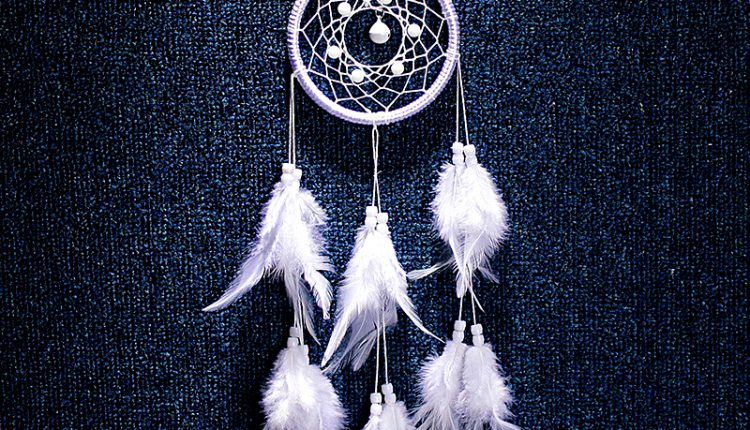The Symbolism And Use Of Dream Catchers
Dream catchers are popular symbols used in modern culture and decor that have a long and spiritual heritage. What do these object really symbolise and how has their meaning altered as they have passed between cultures?
Native American tradition is the origin of dream catchers, with the Sioux Indians being noted for their use of the objects. The concept is very simple – dreams are seen as being airborne entities that chose a host and nightmares are trapped in the net while pleasant dreams are allowed to drift through unhindered. The folklore that brought about dream catchers varies between tribes, but it is often attributed to a spider that offers her web to help protect a tribe – hence the web design. These dream catchers were then hung in the home and above children’s beds as a means to protect them as they slept.
Symbolises feminine qualities and wisdom
They are fairly simple to construct and contain few components, but each part holds a meaning and are vital in the performance of the object. A web is woven around a willow hoop, and a number of personal items are hung from the hoop to increase its sacred power and make the item more personal to the household it is trying to help. The stereotypical image of a dream catcher is for there to be feathers adorning it, and often there are also items such as beads and arrowheads for extra worth and protection. It is generally believed that these feathers are placed on the dream catcher of a young child, and that the choice of feather type is deeply significant. The feather of an owl symbolises feminine qualities and wisdom, while eagle feather – which are the type most commonly depicted – are masculine and a sign of strength.
In modern culture, dream catchers still hold a significant place, with many choosing to continue the tradition in their own bedrooms. The adaptability and room for customisation means that these items can be very contemporary and personal – however some people from Native American lineage believe that this is disrespectful and a sign of the undesirable commercialisation of their culture. As well as using feathers – which do not necessarily have to be from the original source – beads and charms that hold personal significance to the user can be added, and the web can be woven out of thread of a range of colours to match the look of a room or a personality.
Symbol of permanent protection
Alternatively, instead of placing dream catchers above your bed, you can instead opt to have one permanently adorned on your body in the form of a tattoo. Artwork that is inspired by Native American customs are very popular with those that want to show their appreciation of the culture or get in touch with their own heritage. Much like the real dream catchers, the tattoo is often used to symbolise protection. It can be either a symbol of permanent protection for the wearer own dreams and aspirations, or a sign that they are looking to protect their family. It many cases however it is just a pretty image with no deep connection – expanding on the view that this symbolic item is slowly losing its spirituality.
The meaning of dream catchers may be altering as the centuries progress, and for some their use in tattoos may seem disrespectful, however many people are simply adapting the object to modern times and continuing a long, spiritual tradition.

